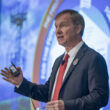Why digital matters
The first two-way radios were developed to transmit voice, but in this generation of texting, e-mail and multimedia applications, digital radio users now have access to new tools and data capabilities that enhance the usefulness of these devices.
Productivity is improved through access to both data and voice communications in one device and more importantly, worker safety is increased based on enhanced communications capabilities. Not only are data applications able to run on these devices, but digital radios also have increased capacity, longer battery life and enhanced voice quality.
There are two primary digital radio technologies in the land-mobile radio (LMR) market today: time-division multiple-access (TDMA) and frequency-division multiple-access (FDMA). While both technologies use state-of-the art vocoders and processors, TDMA offers advanced features, such as transmit interrupt, that FDMA can’t match.
One question that is sometimes asked is why technologies such as code-division multiple-access (CDMA) and orthogonal frequency-division multiplexing (OFDM) are not being driven into the LMR market. Partly it is a function of needs — LMR users require the ability to revert to direct mode for communication when network coverage is not available. Partly it is a function of frequency — TDMA and FDMA efficiently use allocated channel structures with minimal infrastructure, while providing the quality of voice and data communication that is required by radio users. The primary reason revolves around spectrum. There was a strong need to deliver the benefits of digital in existing channel structures around the world because no new channels were available and users wanted to migrate gracefully from existing analog systems, getting the most from existing investments in licenses and equipment. That meant technology that could be used in narrowband 12.5 kHz-wide channels.
A key question to ponder concerns how data applications enabled by digital technology can make you more efficient. Once that is determined, you can explore all the capabilities your two-way radio can provide. As an example, a digital radio using telemetry data can control external devices like alarms or gates and extends the radio to become a more flexible tool for use as a command-and-control device, making workers more productive than ever before.
Meanwhile, the introduction of text communication to two-way radios reduces language barriers, dialect challenges and allows for more efficient communications. Data applications can include indoor and outdoor location tracking for improved fleet management and work-order ticket management for better response times to customer requests. With a man-down application, the radio can even automatically notify dispatch when it falls at a certain angle at a certain rate of speed — so, the radio will call for help even when the worker is unable, helping to improve worker safety. The list goes on and on.
When I speak to customers, across all vertical markets, the common themes I hear are efficiency, productivity and improved safety. Whether communications are mission- or business-critical, the more information that a user has will help him make smarter and quicker decisions. Digital communications provide the pathway.
So, it no longer is a question of whether to “go digital.” Rather it is a question of when — and what applications you need to help improve your workers’ productivity and safety.
Bob Schassler is senior vice president, radio solutions, for Motorola Solutions.

















